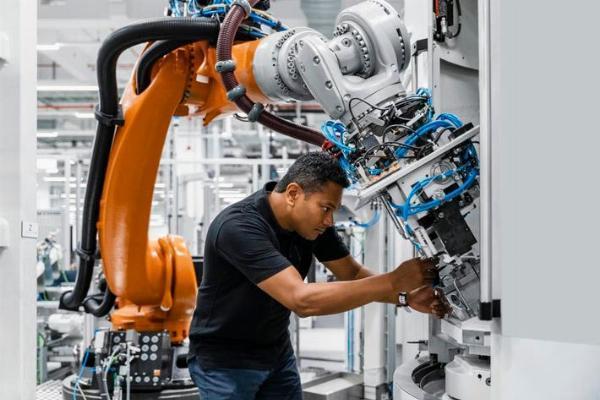 Core Web Vitals Boost – Speed Up Your Site & Your SEO!
Core Web Vitals Boost – Speed Up Your Site & Your SEO!
what is Injection molding
Written by budingereuo » Updated on: June 17th, 2025

Injection molding is a manufacturing process that produces parts by injecting molten material into a mold cavity. It is one of the most common methods for mass-producing plastic parts, but it is also applicable to various materials such as metals, glass, and elastomers.
Here are the basic steps of the process:
Mold Design: The mold is designed according to the specifications of the desired part. It consists of two parts, the cavity side (which forms the injection molding defects external shape of the part) and the core side (which forms the internal features).
Material Preparation: The material used for injection molding, usually in the form of small pellets or granules, is fed into a heated barrel where it is melted into a viscous state.
Injection: The molten material is injected into the mold cavity under high pressure. This pressure helps to completely fill the mold and ensures that the material conforms to the shape of the mold.
Cooling: Once the mold cavity is filled, the molten material is allowed to cool and solidify. Cooling can be accelerated by circulating coolant through the mold or by other means.
Ejection: After the material has solidified, the mold opens, and the part is ejected from the mold cavity. Sometimes, ejector pins or other mechanisms are used to help release the part from the mold.
Trimming and Finishing: The part may undergo additional trimming or finishing processes to remove any excess material or to achieve the desired surface finish.
Injection molding offers several advantages, including high production rates, repeatability, and the ability to produce complex shapes with tight tolerances. It is widely used in various industries, including automotive, aerospace, electronics, medical devices, and consumer products.
Some key elements of the process include:
Pressure Control: Ensuring appropriate pressure is applied during injection to ensure complete mold filling and to avoid incomplete filling or formation of bubbles.
Temperature Control: Precisely controlling the temperature of the heated barrel and mold to ensure proper melting and cooling of the material, thus obtaining the desired physical and mechanical properties.
Injection molding offers several advantages, including high production rates, repeatability, and the ability to produce complex shapes with tight tolerances. It's widely used in various industries, including automotive, aerospace, electronics, medical devices, and consumer products.
Cycle Time: The injection molding cycle consists of filling, cooling, and ejection phases. Optimizing cycle time can improve production efficiency.
In addition to metal powders and binders, MIM feedstock may contain other additives to enhance its properties or facilitate the molding process. These additives may include lubricants, flow enhancers, plasticizers, surfactants, and rheological modifiers.
Lubricants are added to reduce friction between metal particles and improve flowability during injection molding. Flow enhancers improve the flow behavior of the feedstock, ensuring uniform filling of the mold cavity. Plasticizers increase the flexibility of the binder matrix, enhancing moldability. Surfactants reduce surface tension and improve wetting between metal particles and binder material. Rheological modifiers control the viscosity and flow characteristics of the feedstock.
4. Feedstock Formulation:
The formulation of MIM feedstock is a critical aspect of the MIM process and involves optimizing the composition and properties of the feedstock for specific applications.
The selection of metal powders, binder materials, and additives is tailored to achieve the desired properties and performance characteristics of the final part, including strength, density, dimensional accuracy, surface finish, and shrinkage behavior during sintering.
5. Feedstock Properties:
MIM feedstock should exhibit certain key properties to ensure successful molding and subsequent processing. These properties include good flowability, uniform particle distribution, adequate green strength, minimal shrinkage, and compatibility with debinding and sintering processes.
The rheological behavior of the feedstock, including viscosity, shear rate, and flow consistency, is critical for achieving proper mold filling and part quality.
Overall, MIM feedstock plays a crucial role in the Metal Injection Molding process, enabling the fabrication of complex metal parts with precision and efficiency. By carefully formulating and optimizing the composition of feedstock, manufacturers can achieve high-quality MIM parts with tailored properties to meet specific application requirements.
Mold Design: The design of the mold must consider factors such as the shape, size, and wall thickness of the part to ensure optimal filling and cooling effects.
Overall, injection molding is an efficient, versatile, and widely applicable manufacturing process that meets the needs of various industries and provides a reliable solution for producing complex parts.
Note: IndiBlogHub features both user-submitted and editorial content. We do not verify third-party contributions. Read our Disclaimer and Privacy Policyfor details.
Copyright © 2019-2025 IndiBlogHub.com. All rights reserved. Hosted on DigitalOcean for fast, reliable performance.








